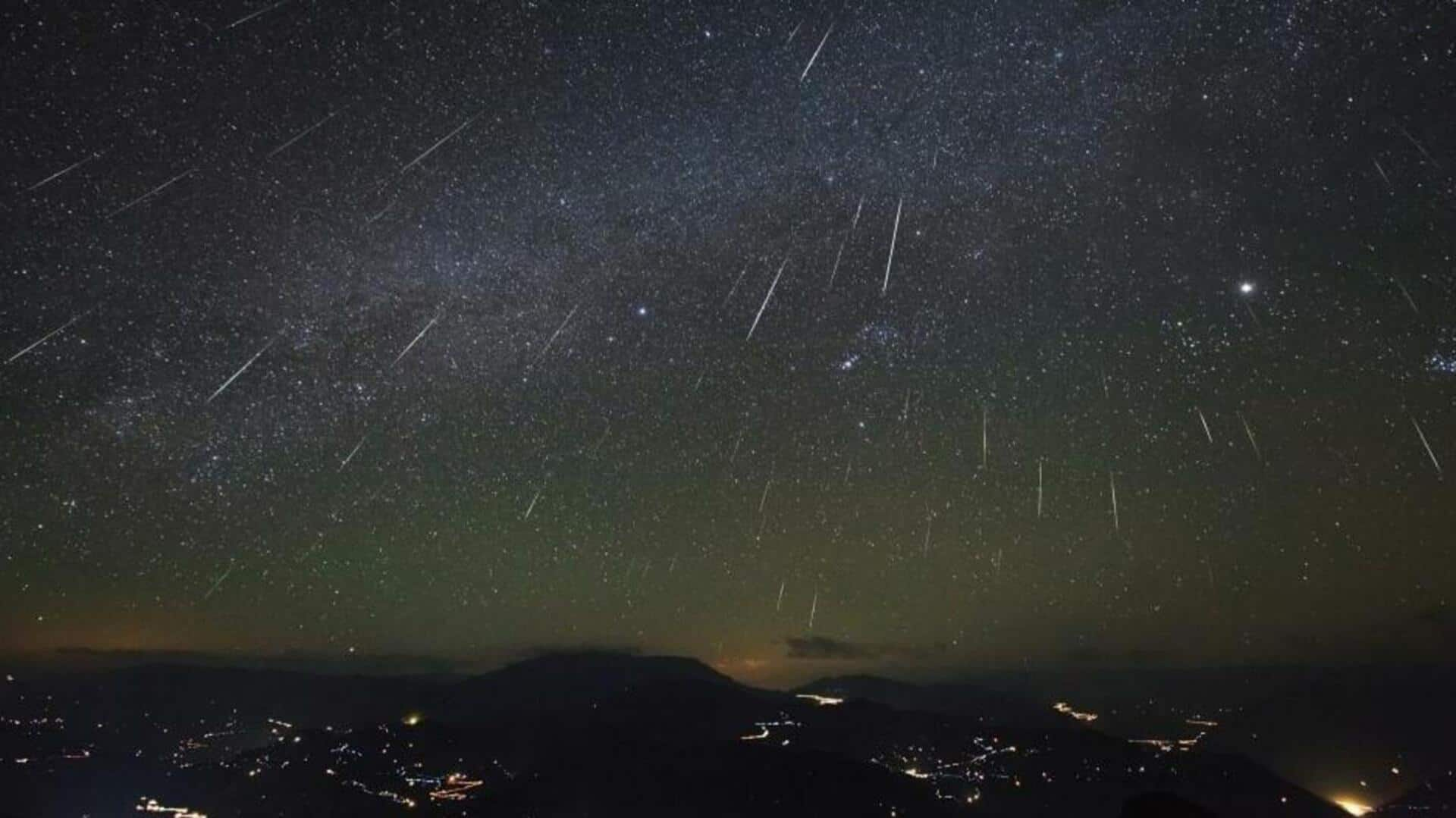
Geminid meteor shower peaks this month: How to watch
What's the story
The Geminid meteor shower, an annual celestial spectacle, is set to peak on December 14. Geminids are one of the best meteor showers in the Northern Hemisphere. They will be active until December 24 and people in India can also view them. This year, the Moon will not interfere with your viewing as it will be in its waxing crescent phase. With minimal moonlight, the bright, yellowish meteors will stand out against the dark sky, creating a stunning visual experience.
Details
Geminids originate from an asteroid
Unlike other meteor showers which are caused by Earth passing through a comet's debris trail, Geminids originate from an asteroid, namely 3200 Phaethon. This "rock comet" behaves more like a comet than an asteroid, as it brightens and produces a tail of debris when approaching the Sun. When the Earth passes the orbit of 3200 Phaethon every year, the debris particles left by the asteroid interact with our planet's atmosphere, where they burn up and produce meteors or "shooting stars."
Misson
Japan's DESTINY+ mission to study 3200 Phaethon
Recent data from NASA's Parker Solar Probe indicates that a disruptive event, like a collision with another space rock thousands of years ago, led to asteroid 3200 Phaethon releasing debris responsible for the Geminids. We could soon have more information on the origin of the Geminids meteor shower. Japan's upcoming DESTINY+ mission, now scheduled for 2025, will study 3200 Phaethon by flying past it and examining its cosmic dust. The spacecraft's cameras will also capture images of the asteroid's surface.
Characteristics
Up to 120 meteors can be seen per hour
The radiant or the point in the sky from which the Geminids appear to originate is the constellation Gemini. This is also where the meteor shower gets its name from. The Geminids are bright and fast meteors, with a speed of 35km/s, per NASA. Under optimal viewing conditions, up to 120 meteors can be seen per hour. These meteors first started appearing in the mid-1800s and since then have grown to become one of the major annual meteor showers.
Insights
Tips for viewing the Geminid meteor shower
To enjoy the Geminid meteor shower at its best on December 14, choose a location far from light pollution. Allow your eyes 20 to 30 minutes to adjust to the darkness. You can start looking out for meteors from around twilight when earth grazers—slow-burn meteors that travel long distances—are more likely to appear. However, the best time for catching the shooting stars will be post 10pm.